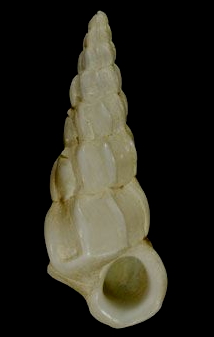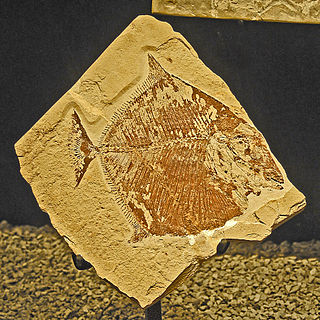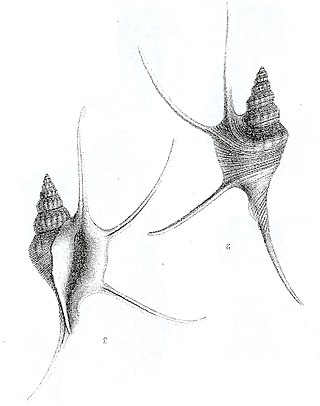Related Research Articles

The family Gryllidae contains the subfamilies and genera which entomologists now term true crickets. Having long, whip-like antennae, they belong to the Orthopteran suborder Ensifera, which has been greatly reduced in the last 100 years : taxa such as the tree crickets, spider-crickets and their allies, sword-tail crickets, wood or ground crickets and scaly crickets have been moved or elevated to family level. The type genus is Gryllus and the first use of the family name "Gryllidae" was by Francis Walker.

Oxyaenidae is a family of extinct carnivorous placental mammals. Traditionally classified in order Creodonta, this group is now classified in its own order Oxyaenodonta within clade Pan-Carnivora in mirorder Ferae. The group contains four subfamilies comprising fourteen genera. Oxyaenids were the first to appear during the late Paleocene in North America, while smaller radiations of oxyaenids in Europe and Asia occurred during the Eocene.

Ostrea is a genus of edible oysters, marine bivalve mollusks in the family Ostreidae, the oysters.

Cryptanthus is a genus of flowering plants in the family Bromeliaceae, subfamily Bromelioideae. The genus name is from the Greek cryptos (hidden) and anthos (flower). The genus formerly had two recognized subgenera: the type subgenus and subgenus HoplocryptanthusMez which has been raised to the separate genus Hoplocryptanthus. All species of this genus are endemic to Brazil. The common name for any Cryptanthus is "Earth star".

Orthophytum is a genus in the plant family Bromeliaceae, subfamily Bromelioideae.

Acirsa is a genus of predatory sea snails, marine prosobranch gastropod mollusks in the family Epitoniidae. They are commonly known as wentletraps.

Exogyra is an extinct genus of fossil marine oysters in the family Gryphaeidae, the foam oysters or honeycomb oysters. These bivalves were cemented by the more cupped left valve. The right valve is flatter, and the beak is curved to one side. Exogyra lived on solid substrates in warm seas during the Jurassic and Cretaceous periods.

Aporrhaidae is a family of sea snails commonly called the "pelican's foot snails." The taxonomy of the Gastropoda by Bouchet & Rocroi, 2005 categorizes Aporrhaidae as marine gastropod mollusks in the clade Littorinimorpha.

Palaeobalistum is an extinct genus of prehistoric ray-finned fish which ranged from the Cretaceous to Eocene periods.

Sphenodiscus is an extinct genus of acanthoceratacean ammonite. The genus has been found from many continents and is thought to have had a large global distribution during the Maastrichtian stage of the Late Cretaceous. It was one of the last ammonoids to have evolved before the entire subclass became extinct during the Paleocene, which was directly after the Cretaceous–Paleogene extinction event.

Cuphosolenus is a genus of extinct small to medium-sized sea snails, marine gastropod mollusks in the family Aporrhaidae and the superfamily Stromboidea, known from the Jurassic and lower Cretaceous periods. Cuphosolenus was named by Edouard Piette in 1876.
Periaulax is an extinct genus of gastropods in the family Trochidae.

Marginellinae is a taxonomic subfamily within the larger family of Marginellidae, a group of small sea snails, marine gastropod molluscs in the superfamily Volutoidea.
The Saskatchewan Organization for Heritage Languages (SOHL) is a provincial non-profit organization dedicated to promoting the study and teaching of heritage languages in the province. Based in Regina, Saskatchewan, it concentrates on languages other than Canada's official languages of English and French, and operates as an umbrella organization for groups, schools and individuals across the province. The SOHL was established in 1985.
The Habana Formation is a geologic formation in Cuba. It preserves mainly gastropod and rudist fossils dating back to the Late Campanian to Maastrichtian periods. The formation was defined by Robert H. Palmer in 1934.
The Sabana Grande Formation is a geologic formation in western Puerto Rico. The conglomerates and limestones of the formation preserve gastropod fossils of Trochactaeon woodsi dating back to the Late Campanian period.

Gervillia is an extinct genus of prehistoric bivalves belonging to the family Bakevelliidae.
Orthaulax is an extinct genus of sea snails in the family Strombidae.

Neoregelia subg. Longipetalopsis is a subgenus of the genus Neoregelia.

Rokautskyia is a genus of flowering plant in the family Bromeliaceae, native to eastern Brazil. The genus was first established in 2017, and is placed in subfamily Bromelioideae.
References
- ↑ d'Orbigny A. 1843. Pal. Franç., Crét., 2 (Gast.), 107, page 49.
- ↑ Paleobiology Database: Acteonella